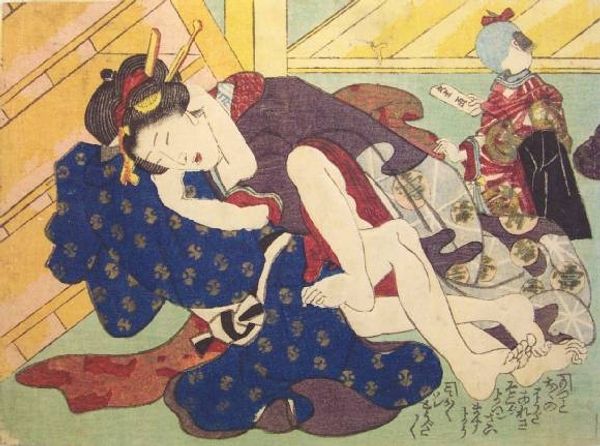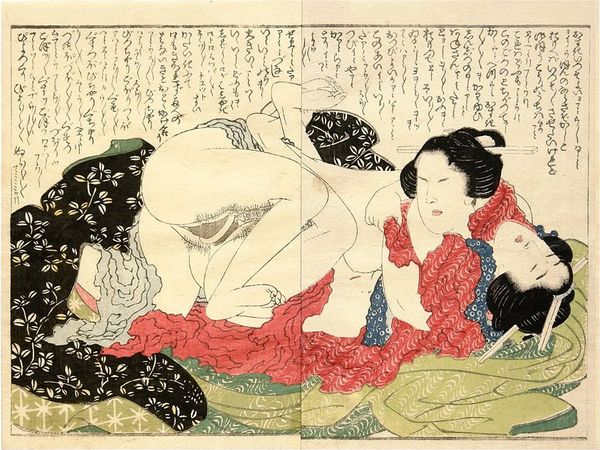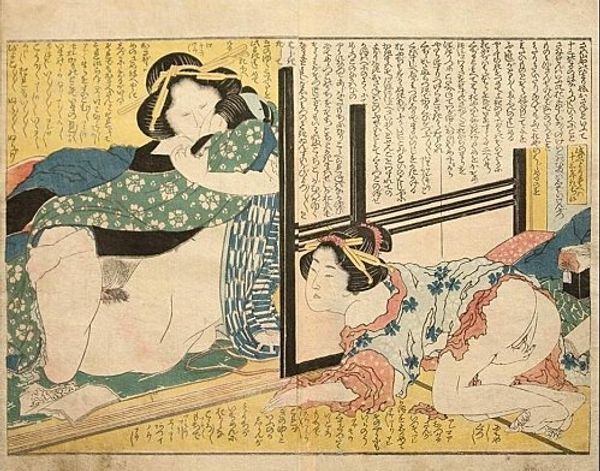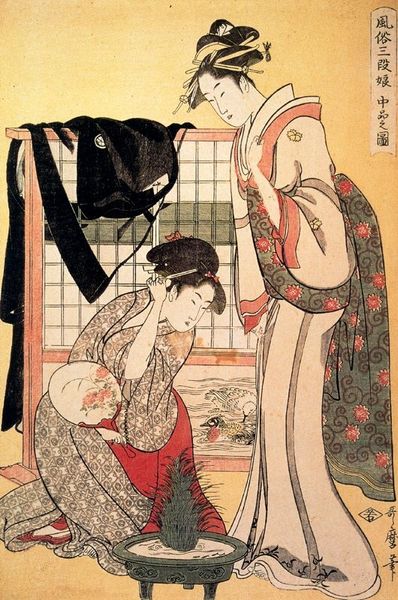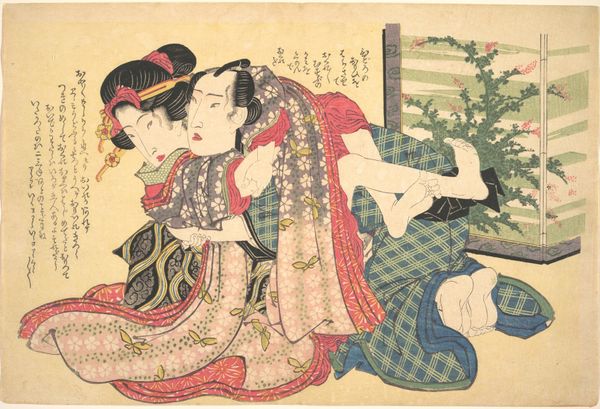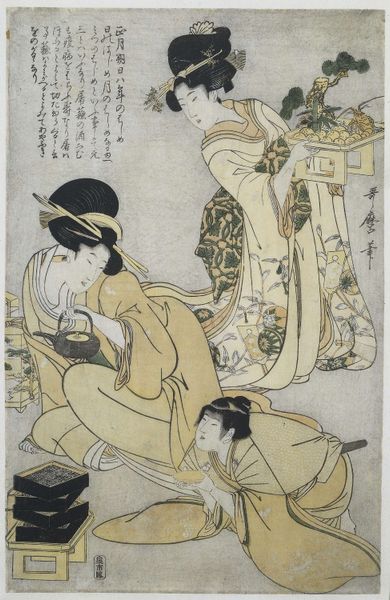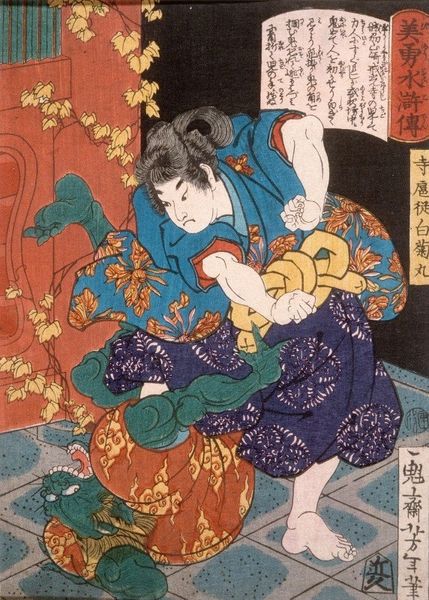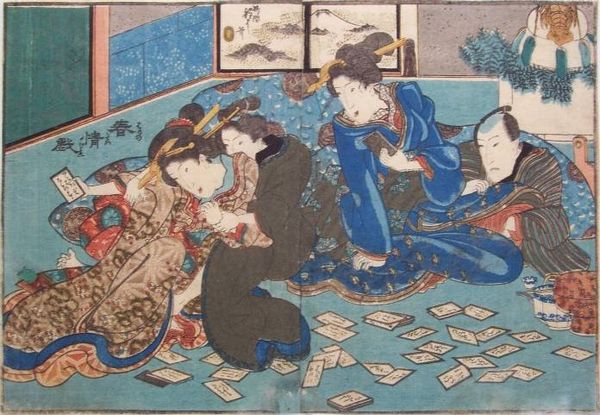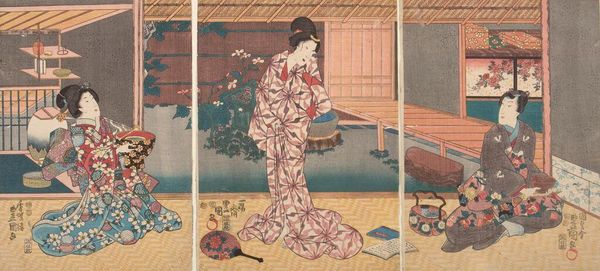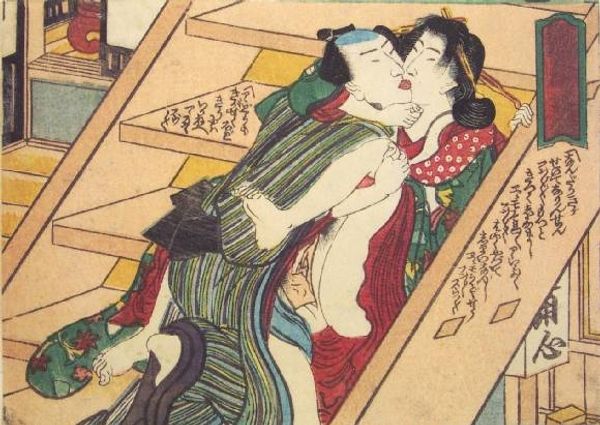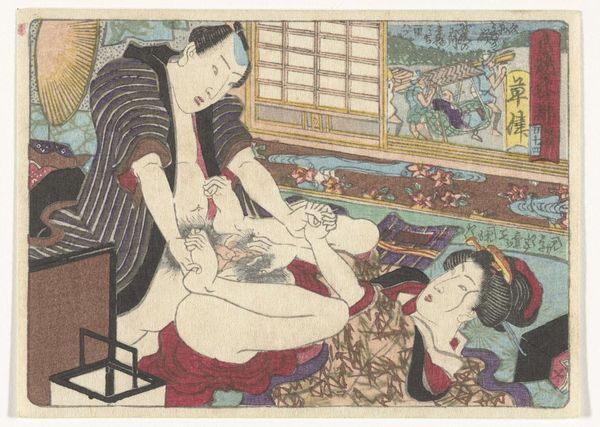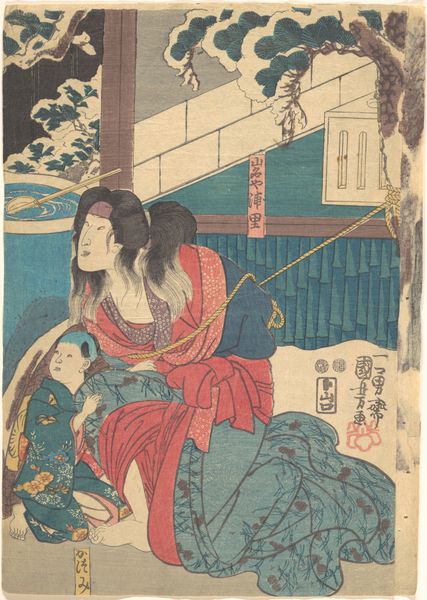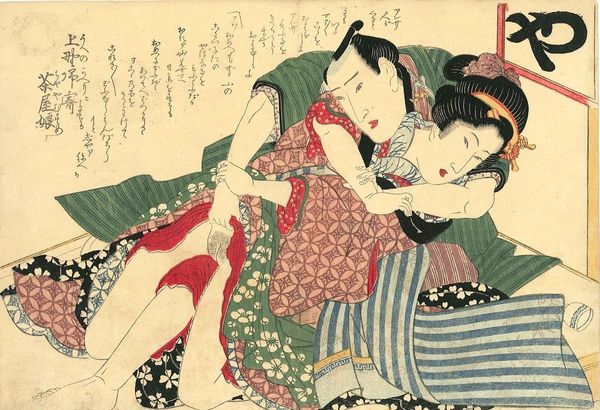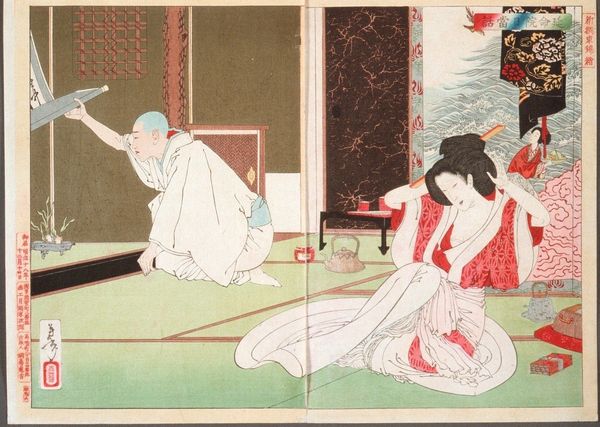
print, textile, woodblock-print
#
portrait
#
narrative-art
# print
#
asian-art
#
textile
#
ukiyo-e
#
text
#
female-nude
#
woodblock-print
#
romanticism
#
genre-painting
#
erotic-art
Copyright: Public domain
Editor: So this woodblock print, "Lesbians Having Sex by a Harikata (Dildo)," was created by Utagawa Kunisada around 1840. There's a real intimacy depicted here, but also a directness that I find a little surprising. How do you interpret this work, especially within its cultural context? Curator: The imagery speaks volumes, doesn't it? Consider the 'harikata' itself – a potent symbol of female pleasure and autonomy. In ukiyo-e prints, erotic themes were often veiled commentaries on social life. Do you notice how the surrounding objects - the textiles, the room itself, the calligraphy – serve to elevate the scene, imbuing it with respectability and even refinement? What story do you think Kunisada is trying to tell about desire and social standing here? Editor: I see what you mean; it's not just about the act itself, but the setting, almost like it's domesticating the erotic. The calligraphy seems really important, but I can’t read it. Curator: Precisely. The text are poems often playing into the setting's emotion. Notice, too, the compositional balance: the interplay of the figures, the careful attention to pattern, that suggests an intent to integrate this subject matter within a recognized artistic vocabulary. How might contemporaries have responded to this blending of art and what we might think of as explicit imagery? Editor: That’s such a good question. It seems like the art elevates the topic in the print. Curator: It certainly prompts a rethinking of cultural narratives about sexuality and art-making, wouldn't you agree? Editor: Yes, it makes you think about what is allowed and for whom. Thanks!
Comments
No comments
Be the first to comment and join the conversation on the ultimate creative platform.
